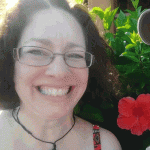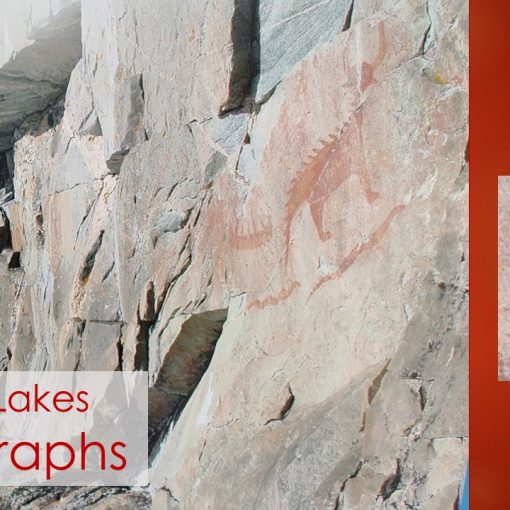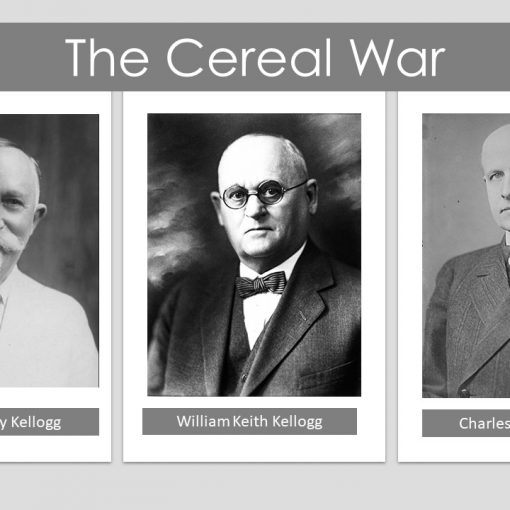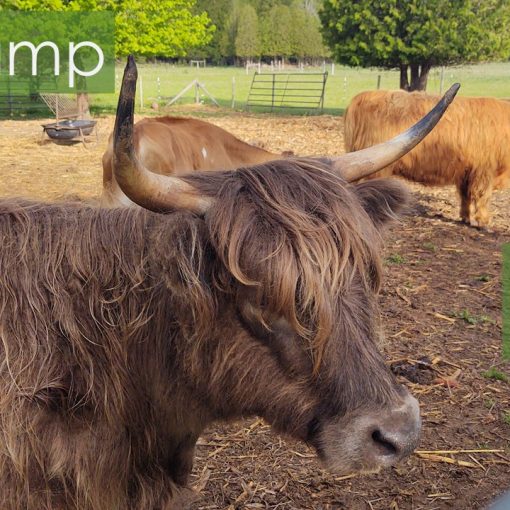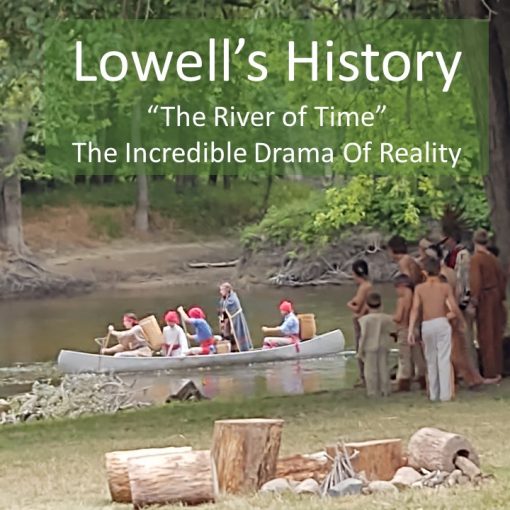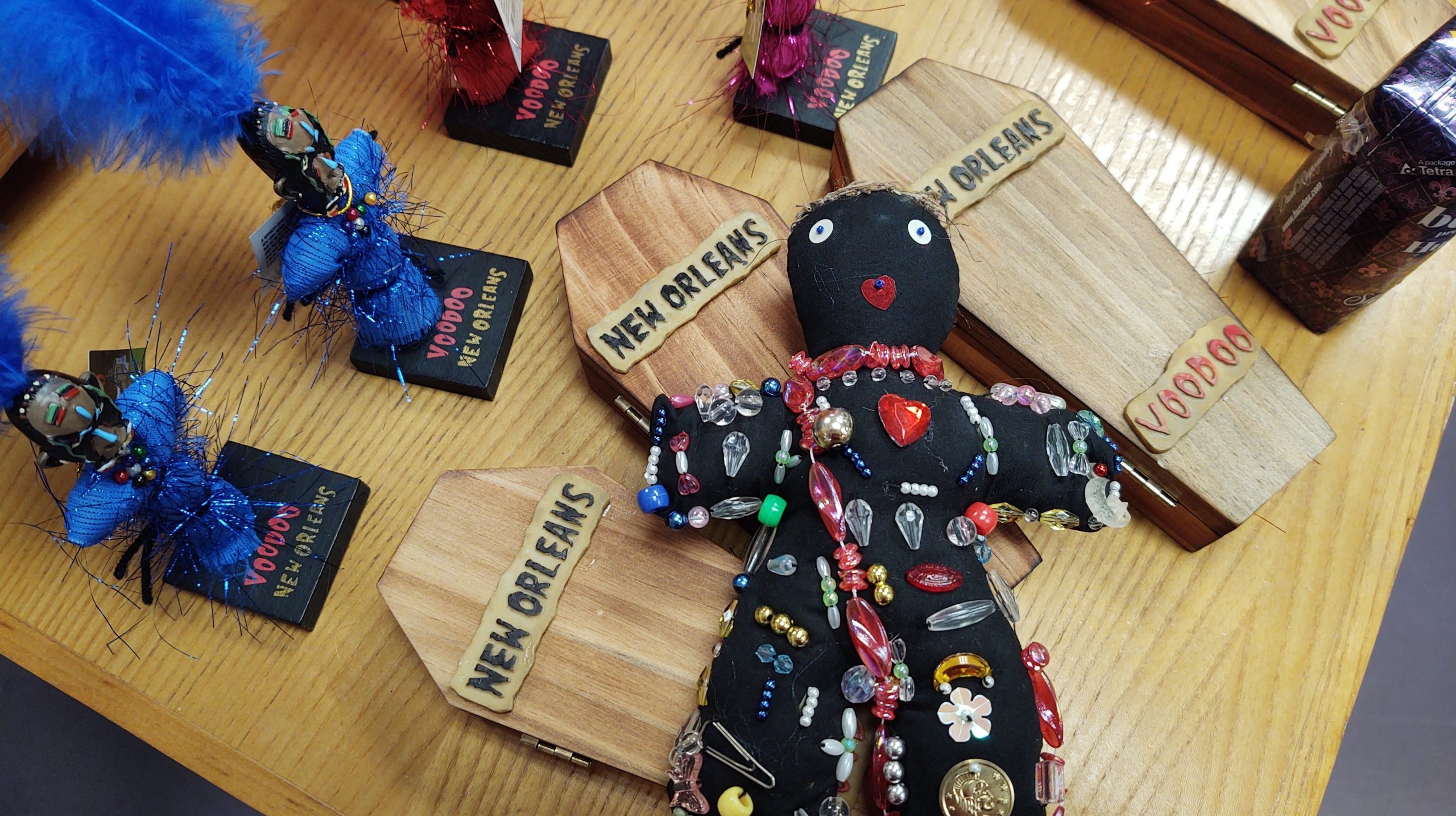
When we think of Voodoo our minds conjure up dolls and magical hex bags. This is all thanks to Wes Craven who created horror films for decades. (1975-2011) His films shaped our thinking and beliefs about Voodoo. But what’s the real story about Voodoo? Well, Da Viking and I went to New Orleans to find out.
Vodou (Voe-doo) is an authentic West African religion. It means “pure light.” In 1719 two ships brought captured African rice farmers to work on plantations along side European indentured servants, who had 36 month contracts. The enslaved Africans were taken mostly from Senegambia, the Bight of Benin, the Bight of Biafra and West-Central Africa. Naturally, they held tightly to their customs and beliefs from their home countries.
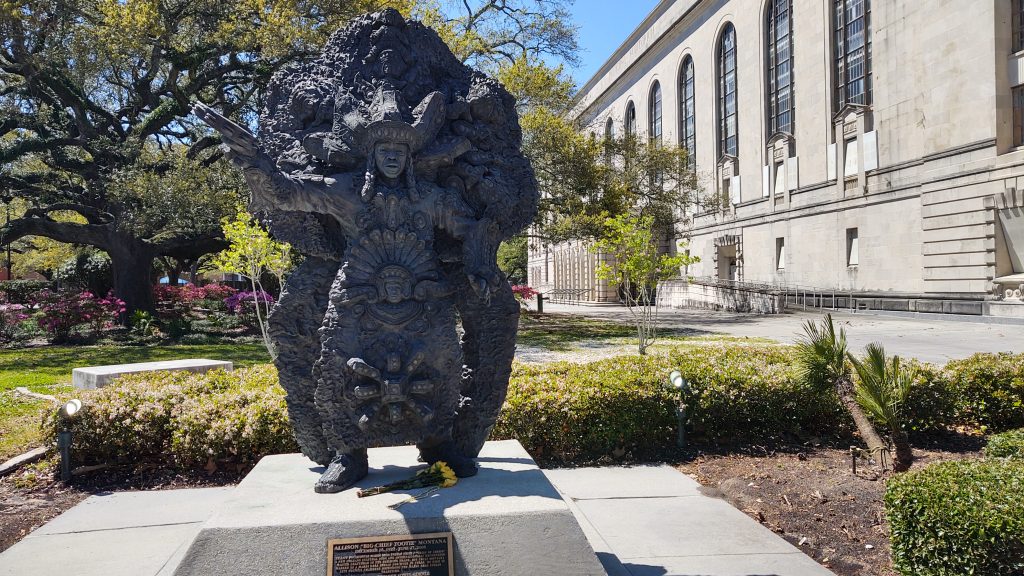
This memorial displays a Native man in his beaded suit.
Documentation from 1722 was found showing that Native Americans had also been enslaved by the European land owners. 100,000 people were held in slavery in Louisiana.
Vodou (Voe doo) was translated to “Veiux Dieu” meaning ‘old god’ in French. The English pronounced it, “Voodoo.” I will use the term “Vodou” in this article. Robi Gilmore (Roe bi), a “Free Tours By Foot” guide and a Vodou high priest, explained these terms in a YouTube video. He wears special beaded necklaces and has his head covered in a cloth wrap to signify his position in the Vodou religion.
With plenty of “tacky tourist” VooDoo shops, I had researched looking for some venues which held authentic roots to Vodou. I called a few stores the week before our visit. One lady I’d spoken with was inviting and encouraging. She said whoever was in her Conjure Shop would be willing to be interviewed.
‘Conjure New Orleans’ is tucked into a tiny space on Bourbon Street. It is a HooDoo shop. It has herbs and candles so one can conduct proper Vodou offerings to their ancestors. The herbs can help heal ailments, too. With my pen poised over my small notebook, I was ready to ‘look behind the curtain’ of Vodou learning all I could for my article.
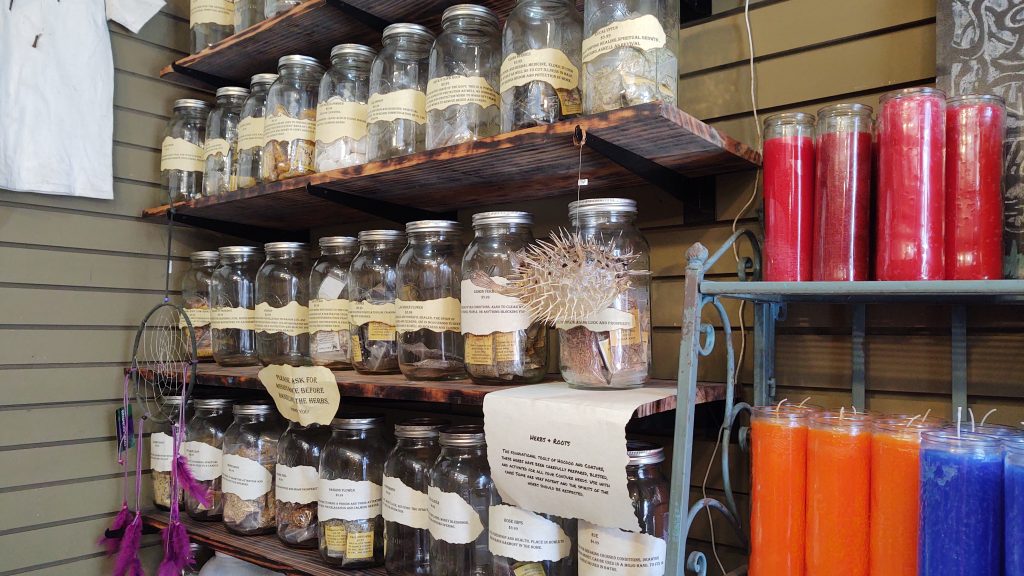
Modern music reverberated off the walls as we entered this tiny store. The tunes had been turned up in an attempt to drown out the construction work outside on Bourbon Street. The young sales lady was slouched behind the counter.
A sign stated, “Ask for assistance” in front of the glass mason jars. When I asked for herbs, she invited me to help myself. “Dat sign is only for dem drunk people. Dey come in here all fiddlin’ with dem glass jars making me crazy. Go ahead now.” She pointed her long, glittery nails toward the shelves. I asked her if we could get a Tarot Card reading. She raised her eyebrows. “I only do dat on Saturdays.” She turned back to her computer.
I went over to the “Florida Water” display and asked her which one she liked the best. I was trying to start a conversation with her to find out more about what had brought her to work in the HooDoo market and her connections to Vodou. She simply shrugged, “The one on the end.”
I was disappointed. Maybe I could have introduced myself and asked for an interview, but her body language and quick answers weren’t engaging. Plus, the music was so loud that it made a conversation difficult. I paid with cash for the herbs, cowrie shells and Florida Water. We were off to the next store, hoping to find some people willing to share their interest in Vodou.
The next shop was full of Wes Craven inspired trinkets and a sturdy security guard who was circulating around the displays. This wasn’t a place to strum up a casual conversation. I bought a book about Vodou. We admired the alter for Marie Laveau before we left.
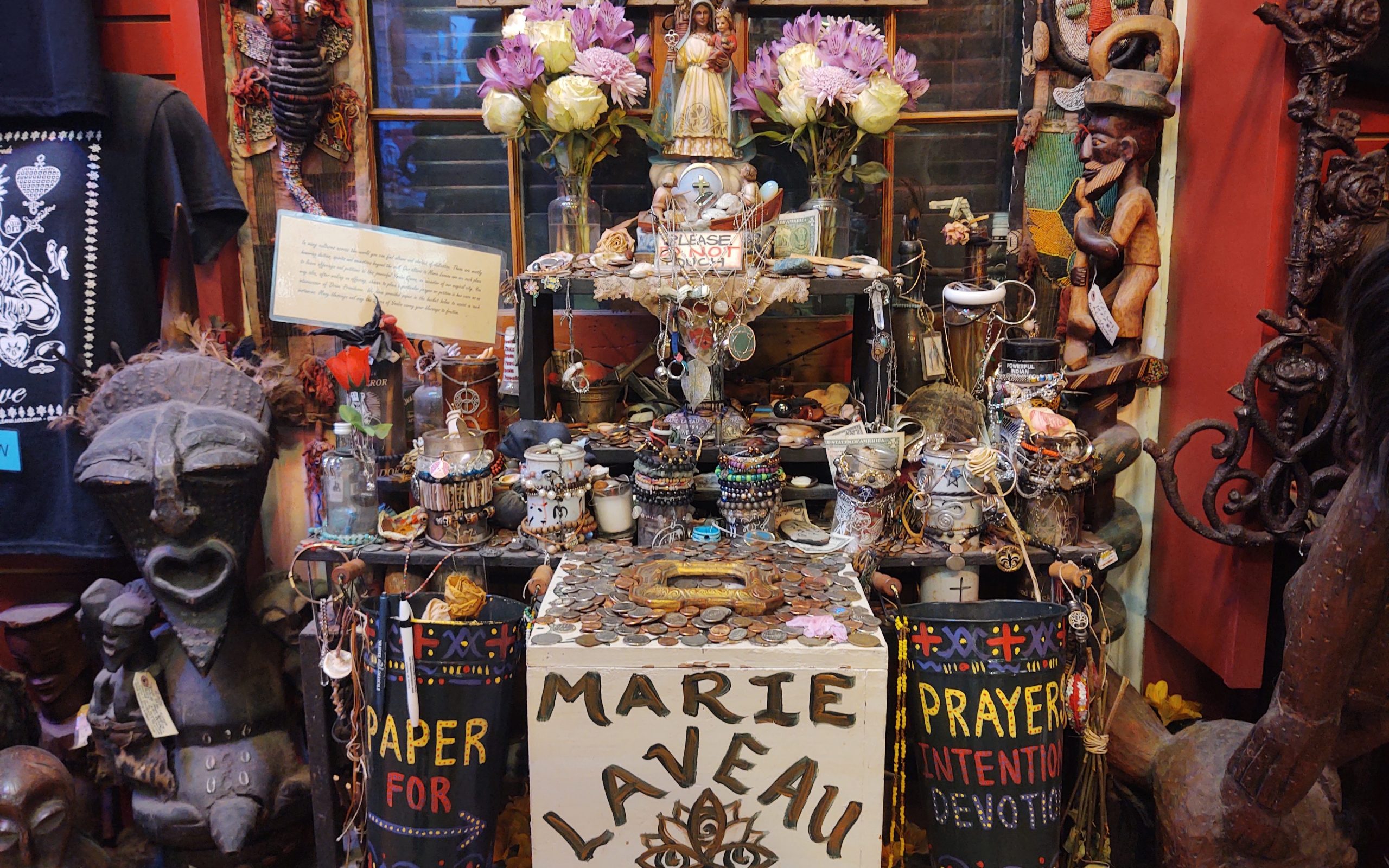
People still leave coins, notes and trinkets to Marie Laveau.
Marie Laveau was the “VoDou Queen.” Her medicinal treatments made with herbs and roots were revered by Africans and Native tribes during her long life (1801-1881). She was a well respected midwife, too. Today people still leave Marie offerings and prayer requests. Her recipes were passed down to her daughter, Marie. These traditions continued to be passed on keeping her mother’s spirit alive through generations.
With “Florida Water” in hand we headed to Congo Square, a landmark of Vodou ceremonies for centuries. I had learned about Vodou from “YouTube University” while conducting research before our trip. I had really hoped to meet someone who would share their first hand account about practicing Vodou, but what we found was a true connection to this religion.
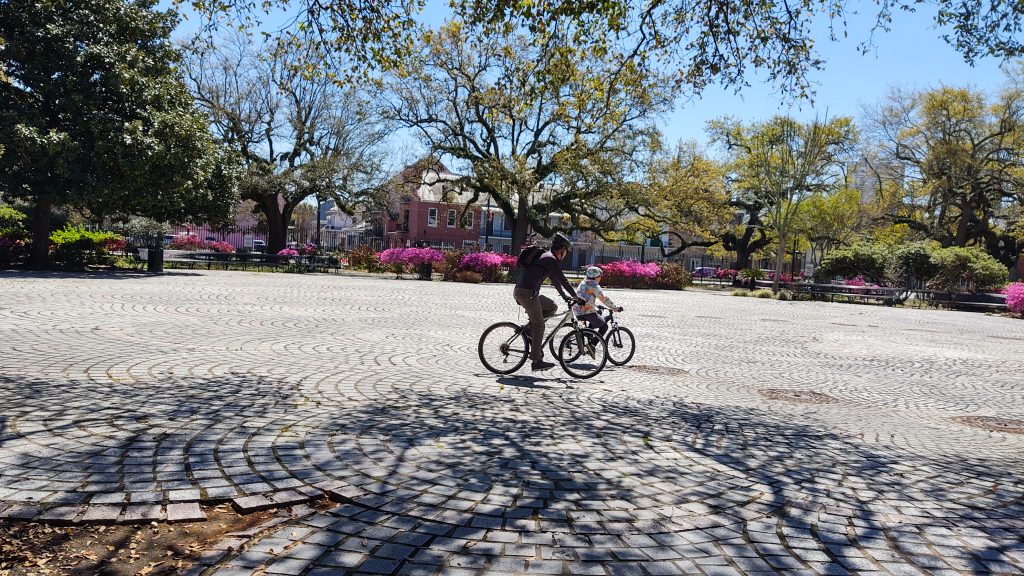
On Sundays they could worship by calling to their ancestors through Vodou practices.
Since the 1700’s Congo Square was the slaves’ weekly gathering place. Congo Square is in the Treme district, located at 701 Rampart Street inside the Louis Armstrong Park.
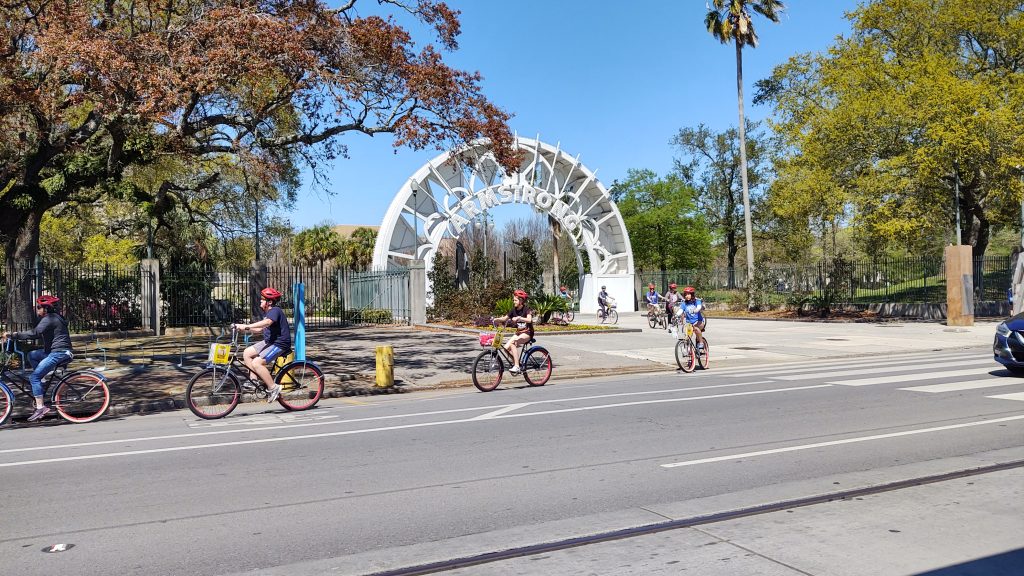
Slaves would be permitted to gather, dance, drum and eat until sundown on Sundays in Congo Square. With the white plantation owners being outnumbered by their slaves 3:1, these gatherings were allowed.
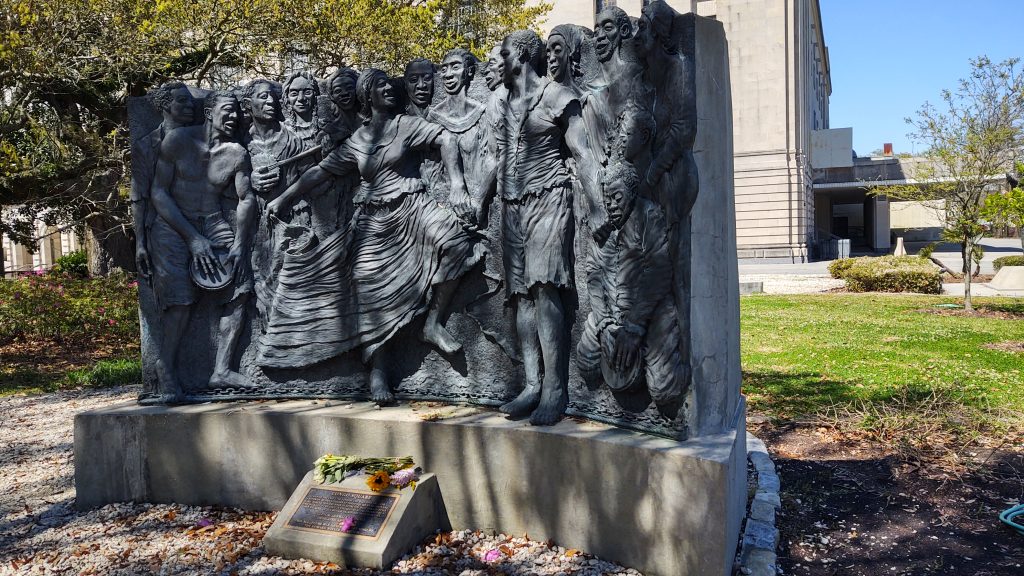
It shows African and Native American slaves dancing together.
The African slaves could reconnect with family members and friends who had been sold to other landowners. They could worship with their Vodou traditions. Robi explained how women are the head of the family in African Vodou culture and catered to during these ceremonies. Robi explained, “Women are tied to water and earth with rebirth life and feminine energy. Men are tied to fire with their anger and air with their structure.”
During the era of slavery a person would be considered a heathen, devil-worshiper if not proclaiming the Catholic religion, so during these gatherings Catholic Saints would be featured. Slaves would display Catholic saints’ statues and relics along side their Vodou traditions.
The priest or priestess would start their Vodou ceremony with making a cross of corn meal or coffee on the ground. This was a beacon to call Papa Legba, the gate keeper to the ancestors.

All spirits are summoned through the gate keeper, Papa Legba. He is an older, kind gentleman who uses a cane. A cane symbol (straight vertical line on the right) is often used as part of the family’s Veve. Similarly in the Catholic religion, St. Peter is known as the gate keeper to enter Heaven.
Much like a family crest, a Veve displays their heritage. The leaf symbols represent Africa. The circled crosses and stars signify their countries of origin. Each family has their own specific Veve design.
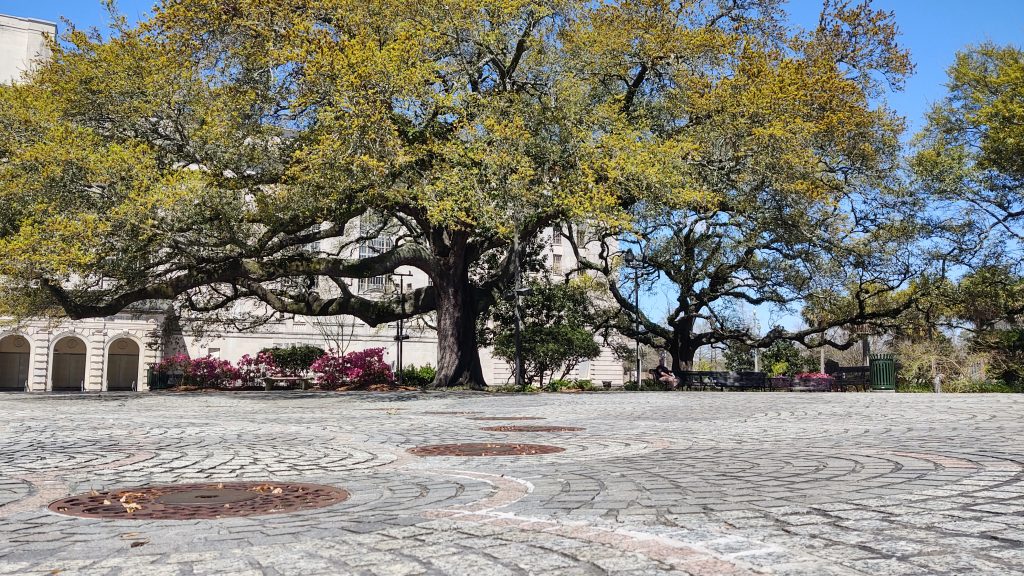
The Eggun Tree, also known as the Ancestor Tree at Congo Square, accepts offerings to spirits and ancestors. It is estimated that this tree has been standing proudly since the 1700’s. Prayerful notes and coins are left as offerings in the crevices of the trunk and on the ground. An orange was placed at the roots of the tree as an offering to Oshoon, the Southern Mother of Love spirit. Da Viking and I found offerings left at the base of the Eggun Tree.
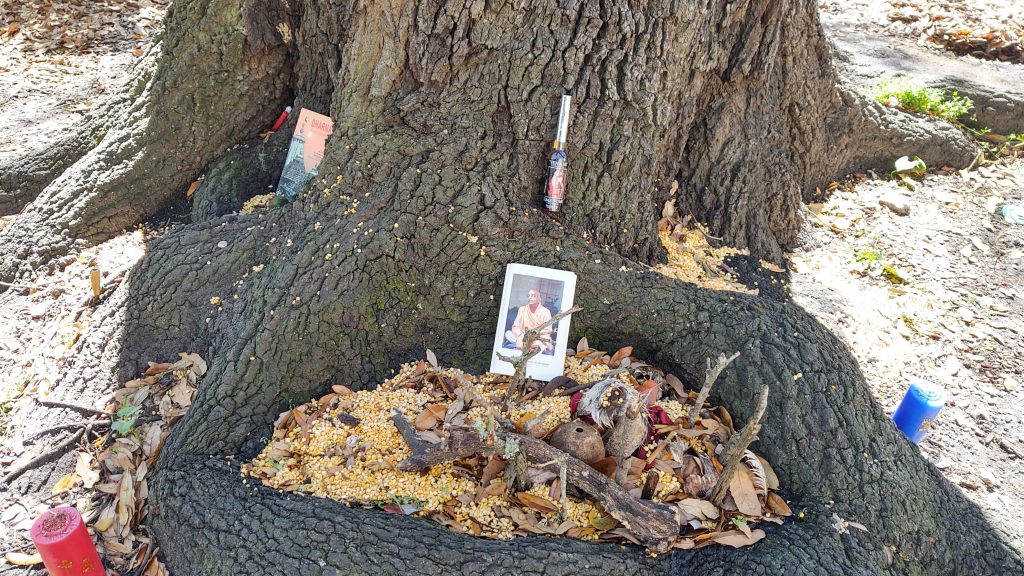
left as offerings at the base of the Eggun Tree.
Using “Florida Water” a priest/priestess will perform a Prosperity Blessing at the Eggun Tree. This holy dance with a maraca will remove bad luck. The secret recipe for Florida Water includes alcohol, herbs as well as the classified ingredients. After sprinkling some Florida Water we left our bottle as a gift.
When we hold a better understanding of others’ beliefs, it can lead to a more unified world. We may not agree with another’s customs and traditions, but respecting each other will create a common foundation to move forward as we share this Earth for our short lifespans.
References:
https://www.youtube.com/watch?v=aksVg8mNtPghttps://www.youtube.com/watch?v=aksVg8mNtPg
https://voodoomuseum.com/

